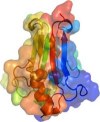Okay, here’s the thing. Sciencebase is now getting around 2000 spam comments every day. So, if I take a break, like I did this week, that’s a vast cr*pflood to check through even with the help of the Akismet spam filter and the Auntie Spam Greasemonkey script for Firefox that compresses and labels Akismet’s findings.
I just passed the 1200 posts mark on this blog and a total of 1200 or so legitimate comments and questions have been posted here by you, the readers. That’s one comment per post, on average, give or take a few. Some posts, such as any that mention the science and religion debate, Richard Dawkins or perpetual motion machines seem to elicit a flurry of comments, but other posts, which personally I predicted would stimulate discussion, seem not to get any comments at all.
Could it be that the vast majority of my posts are simply so wonderfully written and self contained that there is nothing more for you to add? I doubt it! Could it be that no one is actually reading Sciencebase? Well, with 2700 or so RSS subscribers, 1000 podcasters, and several thousand unique visitors to the site each day, that cannot be true either.
I know I shouldn’t worry that the blog receives relatively few comments even compared to countless blogs with fewer subscribers, but I would like to feel that this blog was more than just my random rants and raves and that there might be an opportunity for dialog across cyberspace.
So, here’s the challenge, have a dig around among my blog archives and pick out a post that piques your interest (it could be this one, if you like), leave a pertinent comment on that post of, say, at least 20 words. I’ll then pick out the most inspirational ten new comments over the coming week and post a summary next weekend together with a back link in that post to a site of the commentator’s choice (so be sure to include the web address you want linked in the comment form).
To get you started here are a few links to posts that have proved popular (i.e. were visited the most): Medical marijuana, No More Chocolate Headaches, and Benzene Soda.
Well…what are you waiting for, comment away…



 This issue, I also report on how detecting the differences between young and old hair using Raman spectroscopy is now possible, even if the hair is highly pigmented. You can find out more about that here.
This issue, I also report on how detecting the differences between young and old hair using Raman spectroscopy is now possible, even if the hair is highly pigmented. You can find out more about that here.


 A new methodology for fibre-optic Raman mapping and FTIR imaging of secondary cancer cells, metastases, and detecting tumour cells has been developed by researchers in Germany. The technique facilitates imaging of samples thicker than 50 micrometres and could be used in detecting cancer cells, as a tool for molecular histopathology, in metabolic fingerprinting, general disease diagnostics.
A new methodology for fibre-optic Raman mapping and FTIR imaging of secondary cancer cells, metastases, and detecting tumour cells has been developed by researchers in Germany. The technique facilitates imaging of samples thicker than 50 micrometres and could be used in detecting cancer cells, as a tool for molecular histopathology, in metabolic fingerprinting, general disease diagnostics. US researchers have used a specialist brain scanning technique, magnetic resonance spectroscopic imaging, which is effectively an MRI scan carried out at the molecular level to reveal the effects of yoga practice on the brain. Specifically, they have investigated how concentrations of the feel-good compound gamma-aminobutyric (GABA), an inhibitory neurotransmitter, change after regular practice of yoga postures.
US researchers have used a specialist brain scanning technique, magnetic resonance spectroscopic imaging, which is effectively an MRI scan carried out at the molecular level to reveal the effects of yoga practice on the brain. Specifically, they have investigated how concentrations of the feel-good compound gamma-aminobutyric (GABA), an inhibitory neurotransmitter, change after regular practice of yoga postures. Laboratory spectrometers are great lumbering beasts, essentially tied to the bench and useless for slipping into an overnight bag and heading off for a spot of analytical field work. Thankfully researchers are working on changing all that, at least in the area of atomic spectroscopy.
Laboratory spectrometers are great lumbering beasts, essentially tied to the bench and useless for slipping into an overnight bag and heading off for a spot of analytical field work. Thankfully researchers are working on changing all that, at least in the area of atomic spectroscopy.